The most unusual hat I’ve made so far – the kausia was worn by ancient Macedonians and Roman rulers.
Ariston won my hat prize for both Rowany Festival 2016, and Canterbury Faire in 2017 and requested a pair of matching hats, suitable for high ranking Hellenic Romans. Since this was way out of my area of knowledge, he also sent some documentation, including the competing views of different scholars!
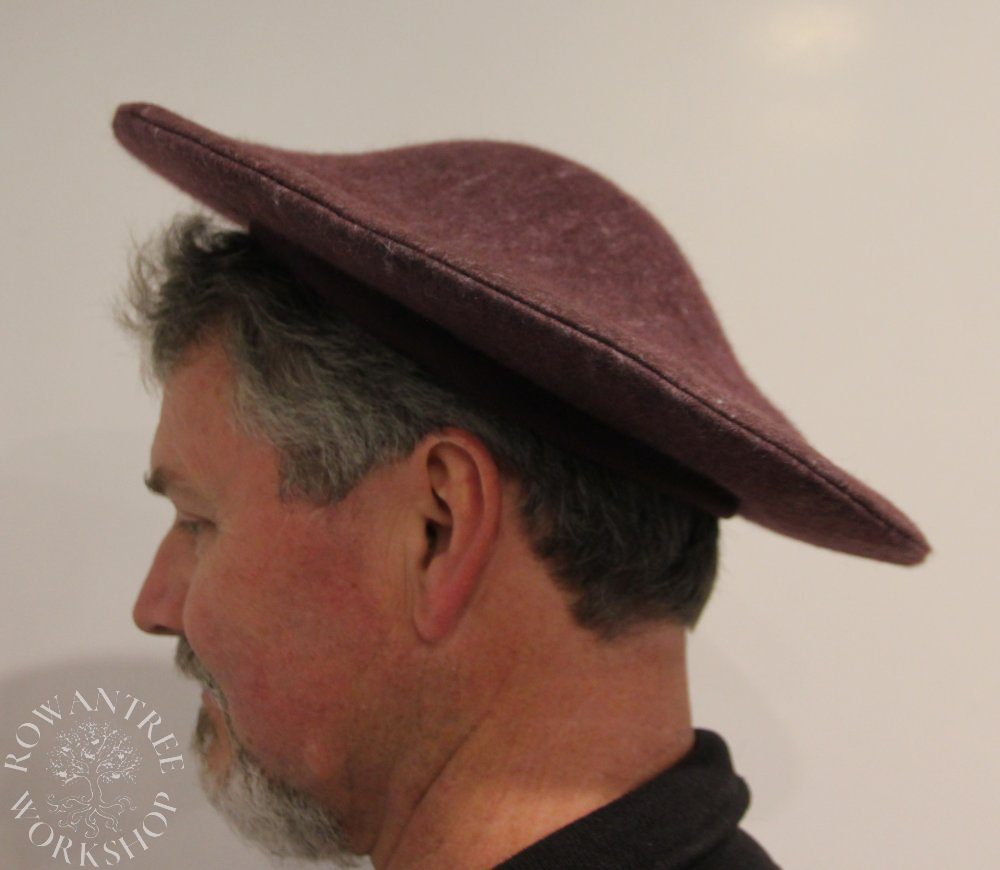
Research and Design
Selekund Traces (accessed 22-Jun-2017) describes the kausia as a large, mushroom shaped felt disk of a hat, dyed ‘crimson’ with murex, sometimes worn with a diadem – tied with the ends hanging loose. Although some scholars argue for kausia made of leather, the images look more like moulded felt hats – and felt could certainly be dyed the royal colours of crimson or purple.
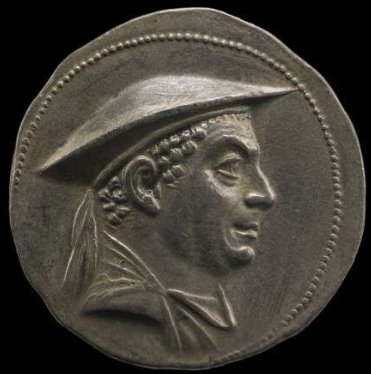
Source: British Museum
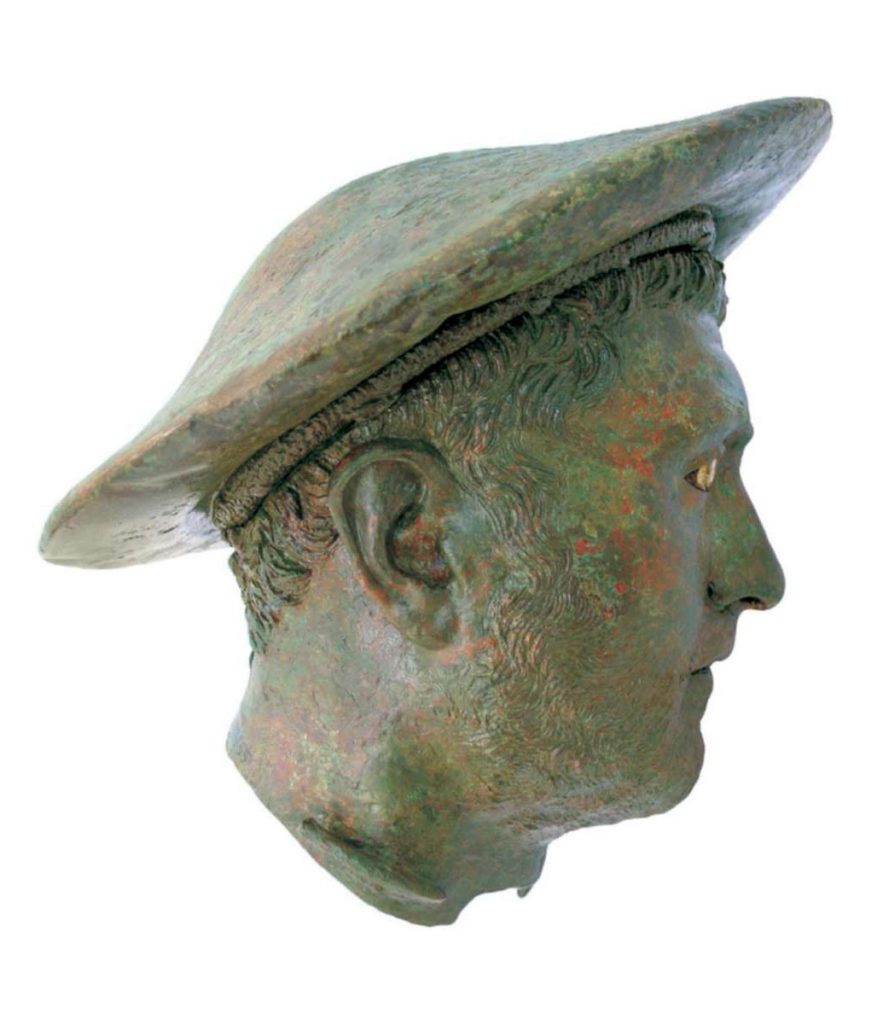
According to a custom introduced by Alexander the Great, only Macedonian kings could wear the kausia with a cloth diadem, with its ties falling down the back.
Although we think of ‘diadem’ as a coronet, in the ancient world it was a ribbon or cloth strap, made of silk, tied at the back of the head with narrow ribbons (Wikipedia). There are also many images of the diadem worn alone, as a mark of status.
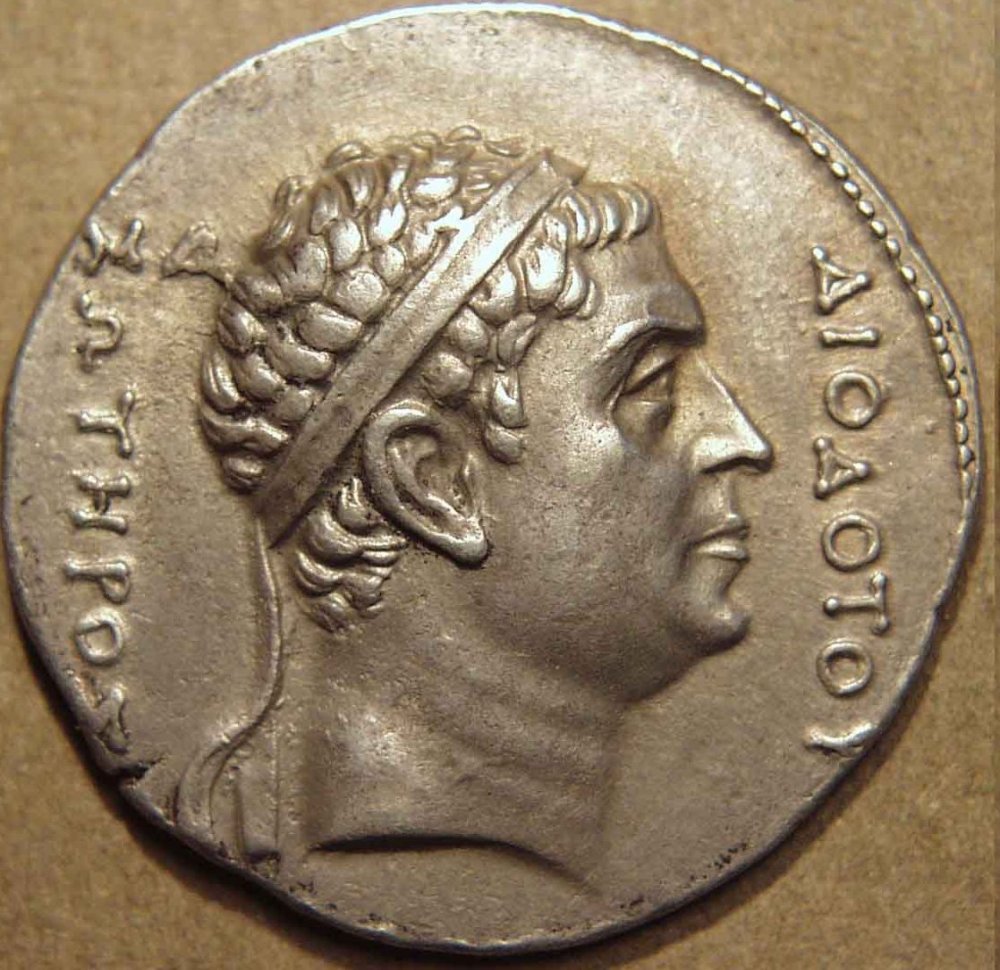
Source: Coin India
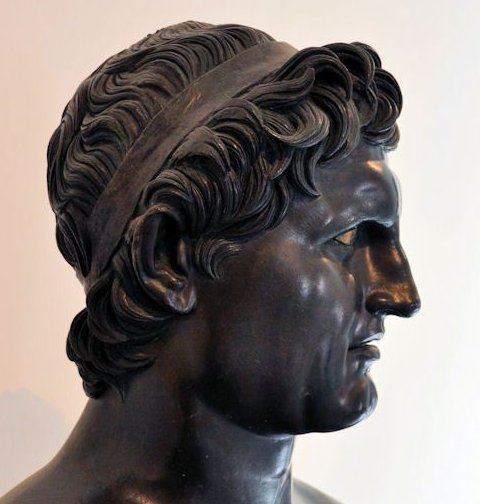
Source: Livius
Construction
I think the kasia would have been made by felting in the piece, but I did not have that skill. I could have blocked each hat from a felt capeline with the brim cut from a second one, but sheet seemed a more efficient approach.
Hatting felt no longer available by the metre, but I found a source of industrial felt online and visited the factory on a trip to Perth. Amazing place – felt of every thickness, for so many purposes! They had coloured felts, but none the right colour or weight, so I bought a piece of 3mm white felt to dye.
Inspired by my friend Montjoye’s success with using food dyes on wool, I tested a sample of felt using equal amounts of blue and red Queen food dye to give a Macedonian royal purple – a lovely colour, although a little flecked from some non-wool fibres in the mix.
Luckily, both heads were the sane size, so I only needed to make one pattern. I padded up my headform and then drafted the top in light card, slitting the crown to get the smooth bulge over the head.
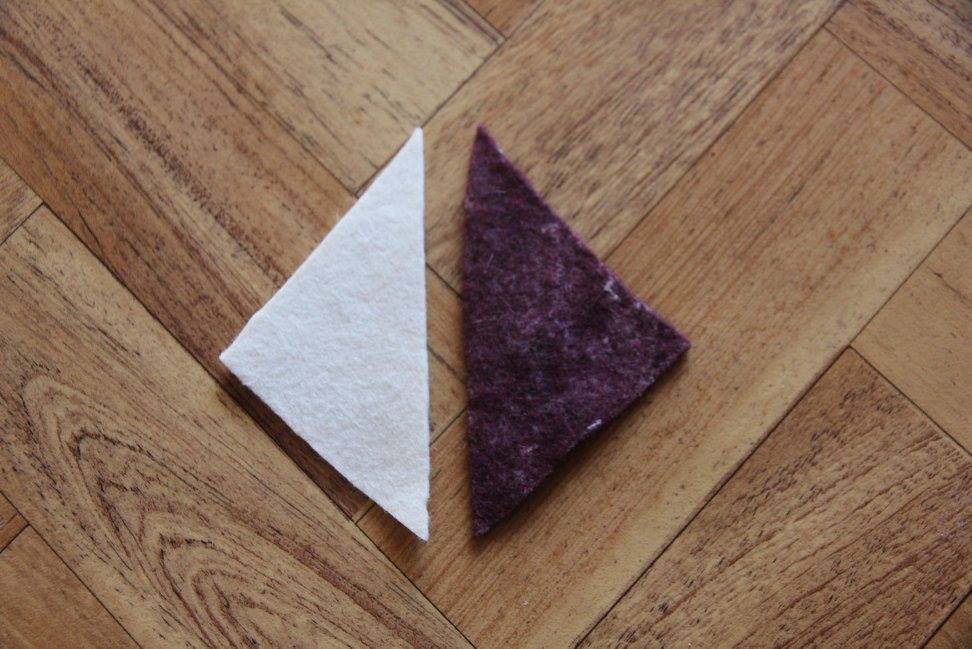
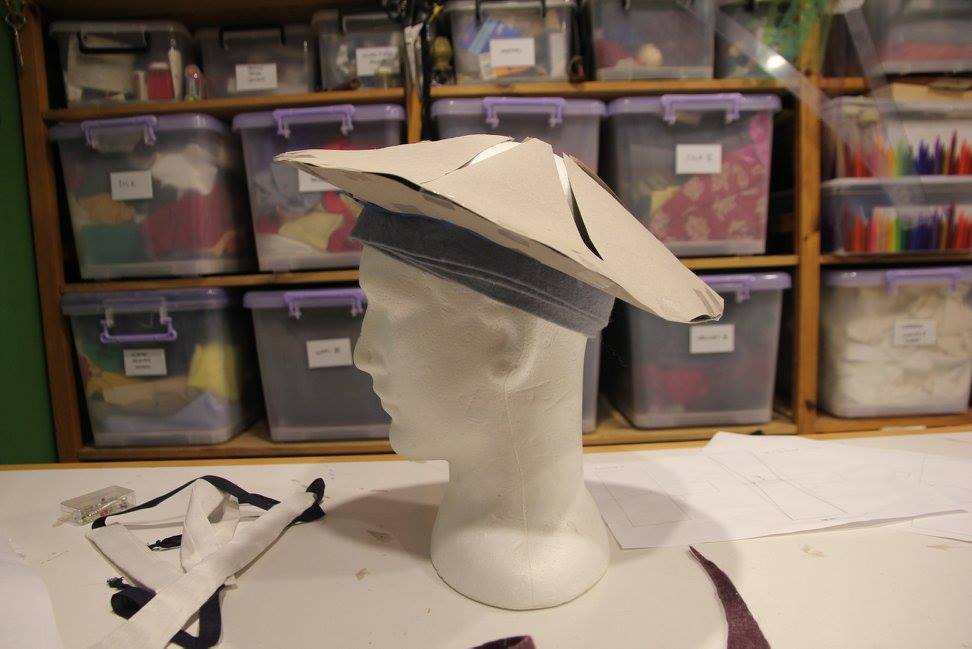
With the pattern done, I cut the pieces oversized and dyed them using food colour (equal quantities of red and blue), then stretched the crowns and set them over rice bowls to dry.
I cut out the brims, cut the headsize oval out and blocked a raised rim using a block cut from styrofoam, slightly oversized to allow for padding.
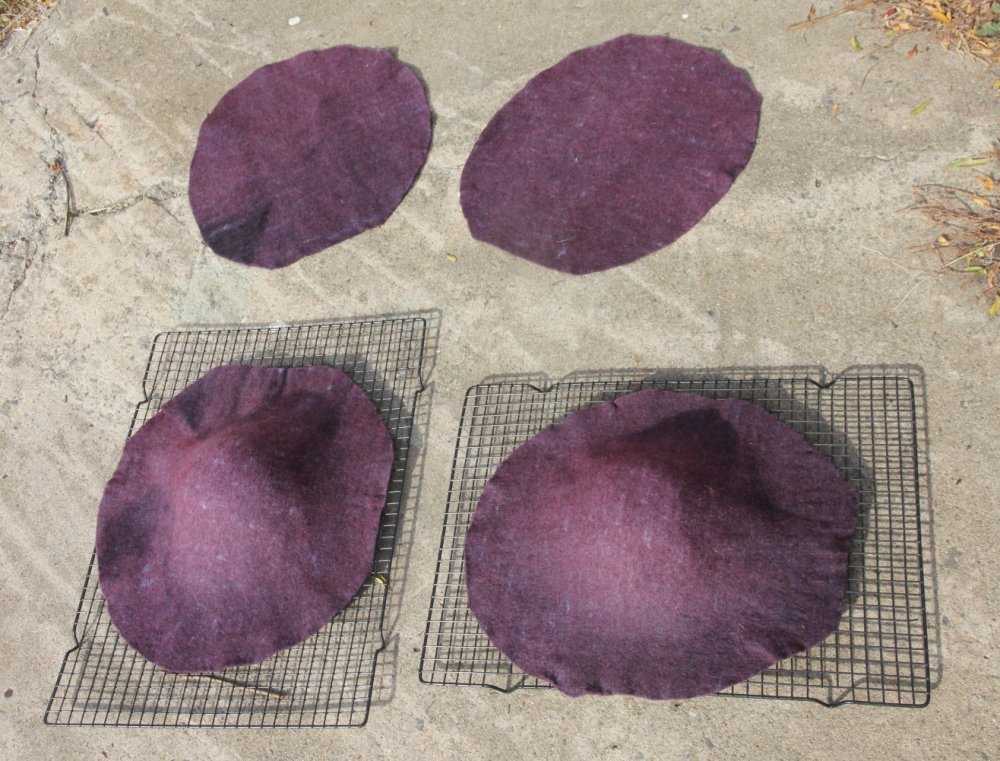
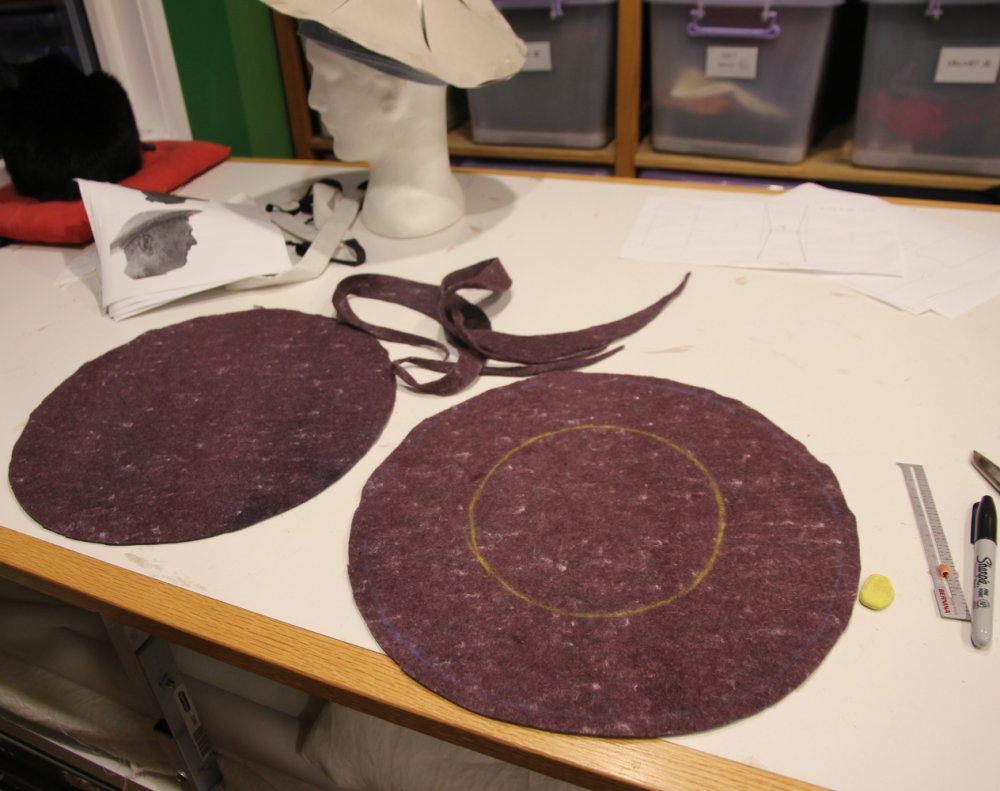
I made the roll to pad the brim using the same felt, wrapped in purple linen. This turned out to be much too stiff and thick, so I made it again using purple linen over a strip of soft wool.
I hand sewed this to the inside of the raised rim, then checked the size – perfect. I sewed the brim to the shaped crown section by machine, then turned and steamed the hat into shape. Once dry I stiffened the crown with hat size, to keep the shape.
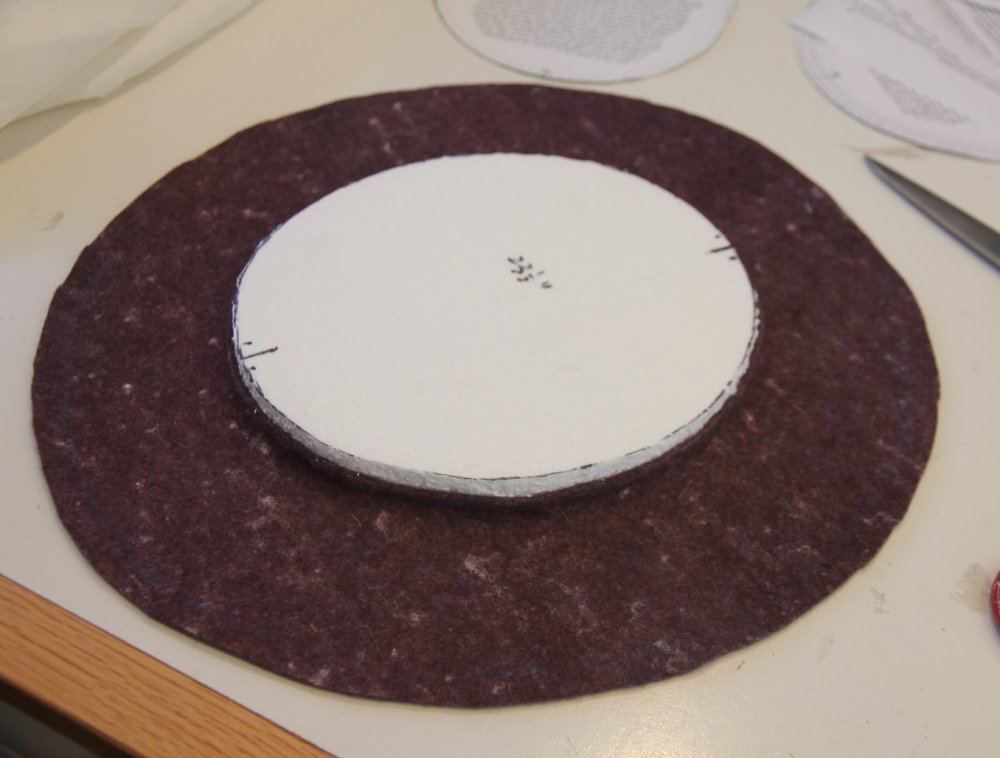
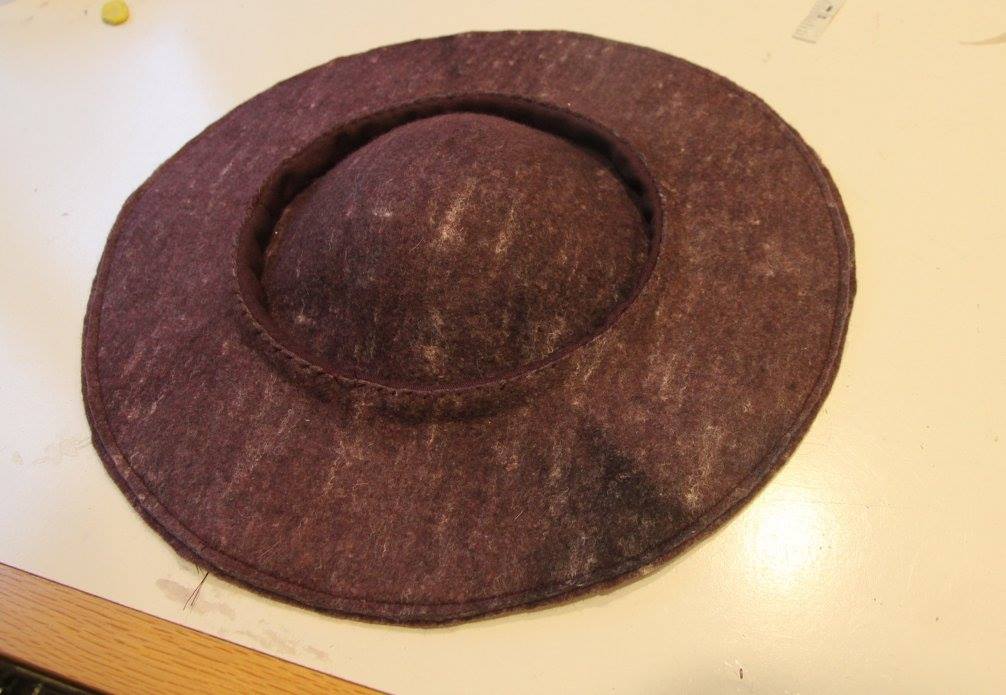
To complete the look, I made a pair of diadem bands in white silk, with silk ribbon ties (but failed to take any pictures).
These hats were a fun exercise in making something very different and trying some new techniques. And the recipients were pleased with the end result.
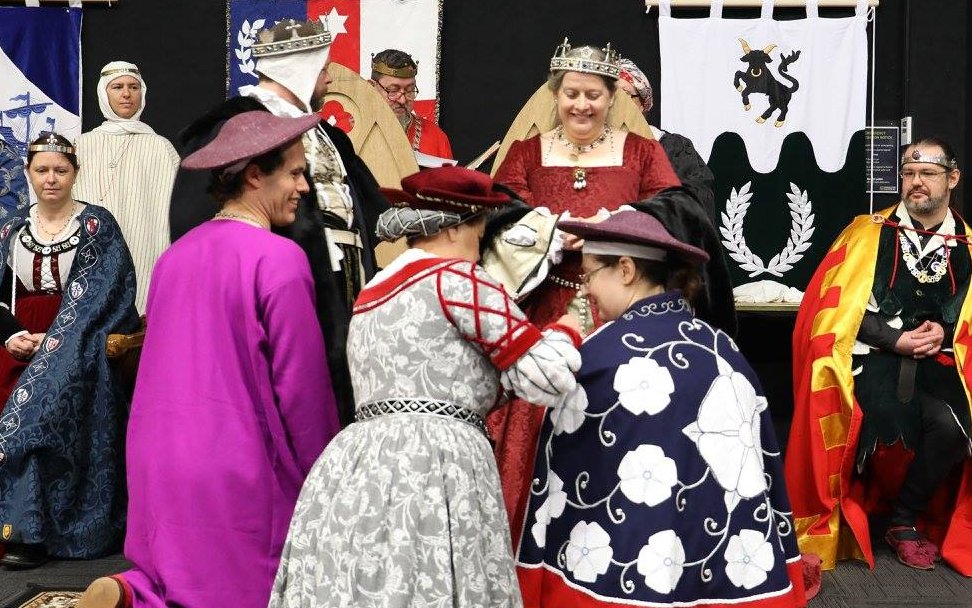
Photo: Isabell Winter

